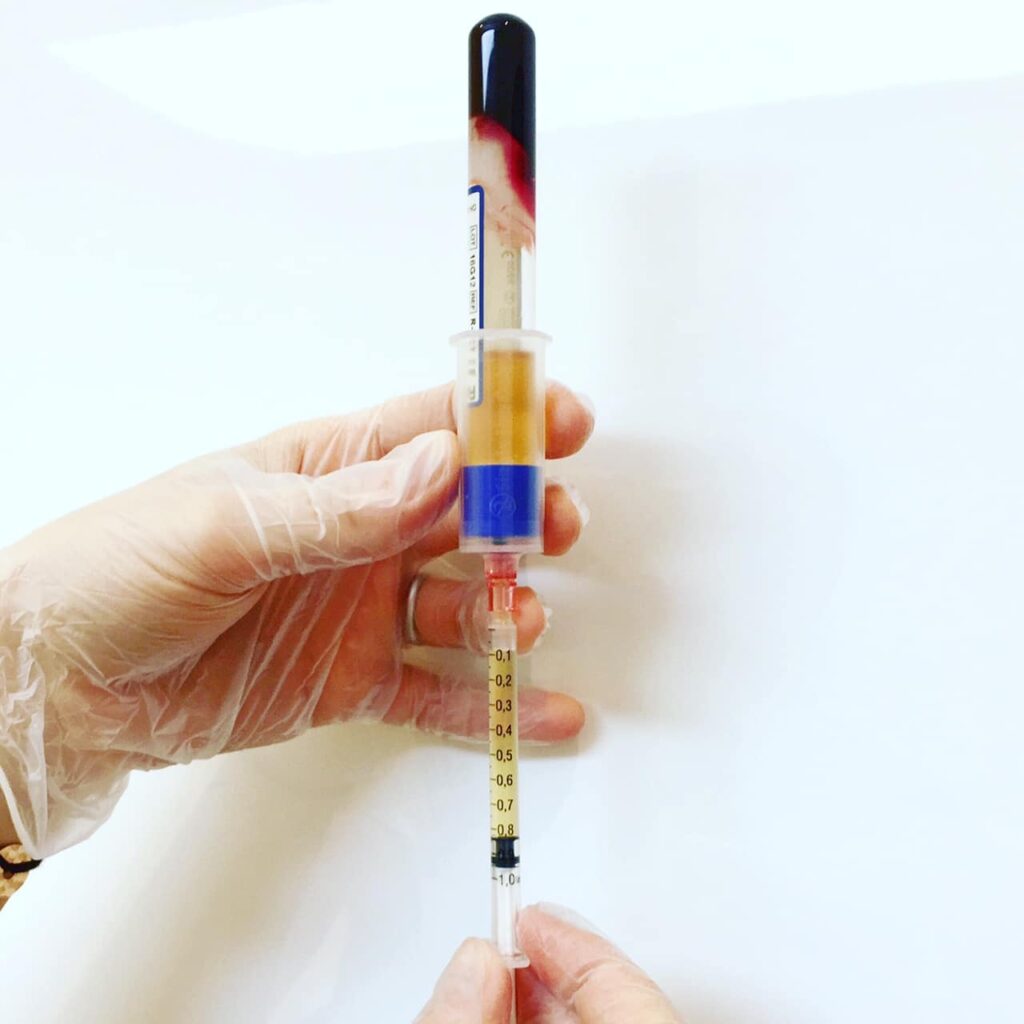
During the past several years, much has been written about a preparation called PRP platelet-rich plasma and its potential effectiveness in the treatment of injuries.
Many famous athletes like Tiger Woods, Rafael Nadal, and several others have received PRP for various problems, such as sprained knees and chronic tendon injuries. These types of conditions have typically been treated with medications, physical therapy, or even surgery. Some athletes have credited PRP with their being able to return more quickly to competition.
What is PRP Platelet Rich Plasma?
Although blood is mainly a liquid (called plasma), it also contains small solid components (red cells, white cells, and platelets.) The platelets are best known for their importance in clotting blood. However, platelets also contain hundreds of proteins called growth factors which are very important in the healing of injuries.
PRP is plasma with many more platelets than what is typically found in blood. The concentration of platelets — and, thereby, the concentration of growth factors — can be 5 to 10 times greater (or richer) than usual.
To develop a PRP preparation, blood must first be drawn from a patient. The platelets are separated from other blood cells and their concentration is increased during a process called centrifugation. Then the increased concentration of platelets is combined with the remaining blood.

How does PRP work?
PRP injections are prepared by taking anywhere from one to a few tubes of the patient’s own blood. The blood is ran through a centrifuge to concentrate the platelets. The activated platelets are then injected directly into the injured or diseased body tissue. Growth factors that stimulate and increase the number of reparative cells begin to repair damaged tissue.
PRP can be carefully injected into the injured area. For example, in Achilles tendonitis, a condition commonly seen in runners and tennis players, the heel cord can become swollen, inflamed, and painful. A mixture of PRP and local anesthetic can be injected directly into this inflamed tissue. Afterwards, the pain at the area of injection may actually increase for the first week or two, and it may be several weeks before the patient feels a beneficial effect.
What Conditions are Treated?
Chronic Tendon Injuries
According to the research studies currently reported, PRP is most effective in the treatment of chronic tendon injuries, especially golfer’s or tennis elbow, a very common injury of the tendons on the outside of the elbow.
The use of PRP for other chronic tendon injuries — such as chronic Achilles tendonitis or inflammation of the patellar tendon at the knee (jumper’s knee) is promising.
Acute Ligament and Muscle Injuries
Much of the publicity PRP therapy has received has been about the treatment of acute sports injuries, such as ligament and muscle injuries. PRP has been used to treat professional athletes with common sports injuries like pulled hamstring muscles in the thigh and knee sprains. There is no definitive scientific evidence, however, that PRP therapy actually improves the healing process in these types of injuries.
Surgery
More recently, PRP has been used during certain types of surgery to help tissues heal. It was first thought to be beneficial in shoulder surgery to repair torn rotator cuff tendons.
Surgery to repair torn knee ligaments, especially the anterior cruciate ligament (ACL) is another area where PRP has been applied.
Knee Arthritis
Some research is being done to evaluate the effectiveness of PRP in the treatment of arthritic knees.
Fractures
PRP has been used to speed the healing of broken bones. Stem cells may also be used simultaneously.
Are there any side affects?
The side effects of PRP injections are very limited, since a the body does not reject a person’s own blood.
For more information on PRP, here’s a link to WebMD.
